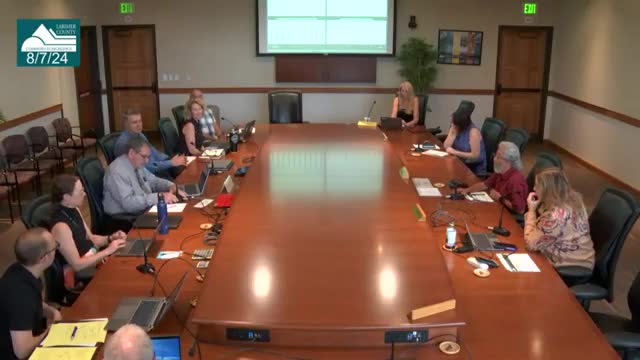Waste Management Director Reveals Urgent Recycling Challenges
August 07, 2024 | Larimer County, Colorado

This article was created by AI summarizing key points discussed. AI makes mistakes, so for full details and context, please refer to the video of the full meeting. Please report any errors so we can fix them. Report an error »

In a recent meeting, Dwayne Penny, the director of solid waste for Larimer County, provided an update on the county's waste management metrics, revealing a slight decrease in landfill waste and ongoing challenges in recycling efforts. The total waste entering the landfill was reported at 346,000 tons, a reduction attributed to a wet season that hindered contractors' operations. The current projections indicate that the Larimer County landfill will reach capacity by January 2026, allowing for some buffer in case of emergencies.
Penny highlighted the importance of a software system that categorizes incoming vehicles and their waste types, which aids in waste composition analysis. This analysis has shown that approximately 58,000 tons of recyclable materials are still being sent to the landfill, with cardboard and various plastics making up significant portions of this waste. Notably, around 25,000 tons of cardboard and 15,000 tons of metal are among the materials that could be diverted from the landfill.
The report also addressed the county's household hazardous waste program, which saw an increase in participation, with 460,000 tons of hazardous materials processed. The \"swap and drop\" initiative, which allows residents to exchange usable items, has rebounded to 29% participation, a significant improvement from the previous year. The recycling rate for hazardous waste stood at 57%, with 261 tons successfully recycled.
However, the rising costs of recycling certain materials, particularly batteries, pose a challenge. Due to changes in state regulations, the cost of recycling batteries has increased to an estimated $8,000 to $10,000 this year, raising concerns about the financial sustainability of these recycling efforts.
Overall, the meeting underscored the county's commitment to improving waste management practices while navigating the complexities of recycling and waste diversion in the face of evolving market conditions.
Penny highlighted the importance of a software system that categorizes incoming vehicles and their waste types, which aids in waste composition analysis. This analysis has shown that approximately 58,000 tons of recyclable materials are still being sent to the landfill, with cardboard and various plastics making up significant portions of this waste. Notably, around 25,000 tons of cardboard and 15,000 tons of metal are among the materials that could be diverted from the landfill.
The report also addressed the county's household hazardous waste program, which saw an increase in participation, with 460,000 tons of hazardous materials processed. The \"swap and drop\" initiative, which allows residents to exchange usable items, has rebounded to 29% participation, a significant improvement from the previous year. The recycling rate for hazardous waste stood at 57%, with 261 tons successfully recycled.
However, the rising costs of recycling certain materials, particularly batteries, pose a challenge. Due to changes in state regulations, the cost of recycling batteries has increased to an estimated $8,000 to $10,000 this year, raising concerns about the financial sustainability of these recycling efforts.
Overall, the meeting underscored the county's commitment to improving waste management practices while navigating the complexities of recycling and waste diversion in the face of evolving market conditions.
View full meeting
This article is based on a recent meeting—watch the full video and explore the complete transcript for deeper insights into the discussion.
View full meeting
